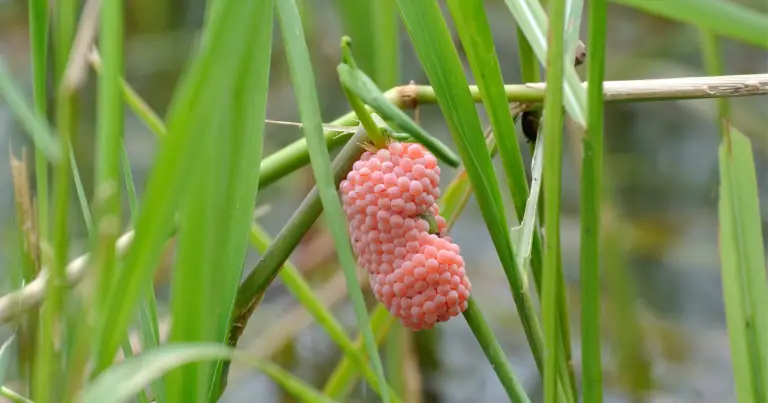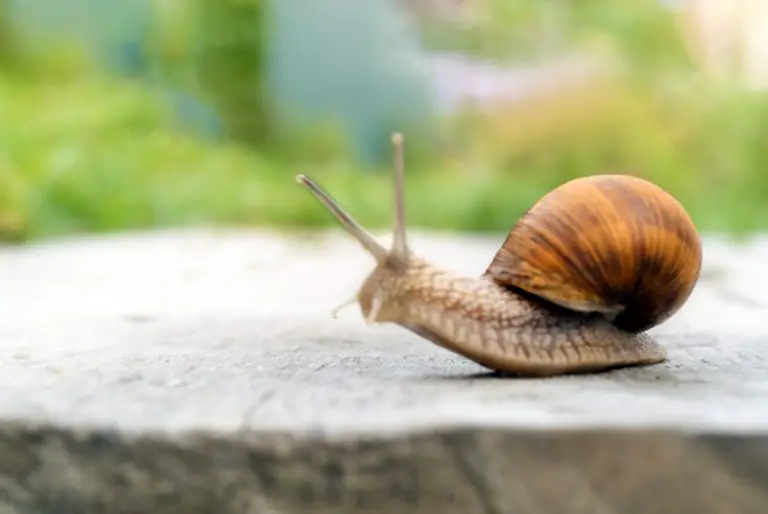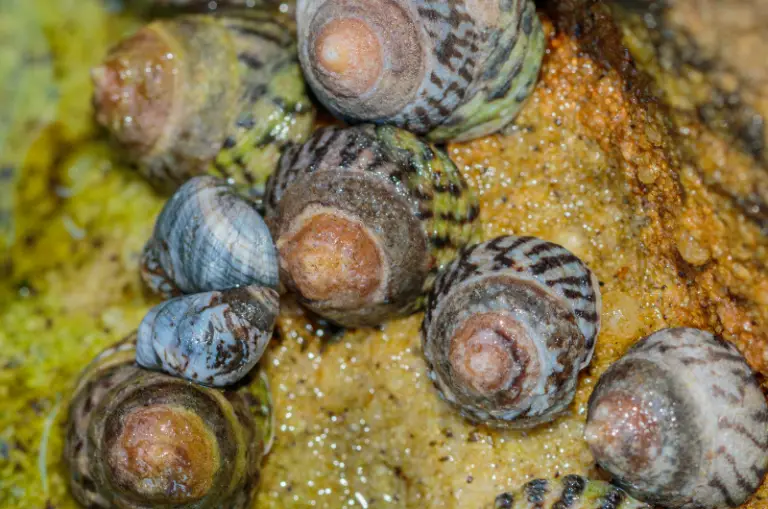Florida Snails: Essential Facts and Species to Know

Florida, a state known for its diverse wildlife and lush environments, is also home to an array of snail species. Among these are native snails, such as apple snails with their globose shells and aquatic habitats, and more invasive species, like the giant African land snail, which poses significant threats to local ecosystems and agriculture sources.

Understanding the various types of snails in Florida can help you appreciate their natural history and recognize potential threats to the state’s delicate balance.
You may encounter medium to large snails in Florida’s freshwater environments, including Campeloma, Lioplax, and Tulotoma from the subfamily Lioplacinae. These snails are endemic to North America and are part of the broader Viviparidae family, which can be found on every continent bar South America source.
Additionally, invasive species like the giant African land snail have a history in Florida and require quarantine efforts to limit their spread and protect native flora and fauna sources.
Watch for these intriguing and unique mollusks as you explore Florida’s natural scenery. By recognizing their characteristics and understanding the importance of preserving native species, you can contribute to conserving Florida’s precious ecosystems and maintaining the balance between native and invasive species.
Contents
Table of Contents
Florida Snails Overview

In Florida, snails are a diverse group of gastropods found in various habitats, including freshwaters, lands, and trees. These creatures play crucial roles in Florida’s ecosystems and are a source of fascination to scientists and nature enthusiasts. They exhibit variety in size, shape, shell color, and their linguiform white flesh.
Some common types of snails in Florida belong to two subfamilies – the Lioplacinae, which are endemic to North America, and the Viviparinae, which are widely found throughout Europe, Asia, and eastern North America. Additionally, Florida harbors several species of Pomacea apple snails, including both native and exotic species source.
Regarding size, Florida snails can range from small to large. For instance, the banded tree snail (Orthalicus floridensis) is the largest native land snail in the region source. In contrast, some Pomacea spp. Apple snail species boast shell sizes up to 4 inches. Shell colors may vary from yellow to green or brown, sometimes displaying brown-black spiral bands.
As a gastropod, Florida snails exhibit diverse shell shapes, from globose (rounded) to more flattened or depressed. The aperture, or opening of the shell, is typically oval or round. For example, the milk snail is approximately 2/3 as high as wide source.
In terms of reproduction, snails usually lay eggs. However, it’s essential to be cautious around unknown snail species, as some could be invasive or harmful to native plants and animals. For example, Florida has recently experienced a resurgence of the giant African land snail, posing a significant threat to the local ecosystem source.
Watch for these intriguing and diverse gastropods as you explore Florida’s natural habitats. Their unique characteristics and contributions to the ecosystem make them a vital aspect of the Sunshine State.
Invasive Snails in Florida

Florida faces a significant problem with invasive snails, particularly the giant African land snail. These snails not only threaten the native ecosystem but also carry a parasite that can cause meningitis in humans. As you learn more about this issue, it’s essential to understand the impact of these snails and what steps are being taken to control their population.
The giant African land snail can grow up to 8 inches long and almost 5 inches in diameter, which makes it one of the largest snail species in the world. These snails are voracious eaters and can consume more than 500 different types of plants. This raises concerns about their negative impact on Florida’s native flora and agricultural crops.
Another issue with the giant African land snails is that importing or possessing them in Florida is illegal. However, the snails have still established themselves in the state, likely due to accidental or intentional releases by people. This has led to a quarantine being issued to control their spread and prevent further damage.
In addition to the giant African land snail, Florida also has issues with other invasive snails, such as the Pomacea apple snail. These snails can be found in at least 29 watersheds throughout the state and cause similar ecological concerns.
Efforts are being made to control the invasive snail populations in Florida, including releasing natural predators like insects, which specifically target these snails. Education and awareness campaigns also play a vital role in preventing their spread and helping the public understand the consequences of releasing these snails into the wild.
It’s critical to stay informed about the invasive snail problem in Florida and follow any guidelines issued by authorities to protect the state’s ecosystem and public health. By understanding the impact of these snails and the methods used to control their population, you can play a role in mitigating their destructive presence in the Sunshine State.
Geographical Distribution
Florida is home to a diverse range of snail species inhabiting various environments throughout the state. In tropical and subtropical environments like Miami-Dade County and Broward County, the Florida tree snail is well adapted to these warm and humid climates. They are often found living on tree trunks and branches in hardwood hammocks.
Along Florida’s Gulf Coast, especially in areas like Pasco County and New Port Richey, you may encounter freshwater snails like those from the LIOPLACINAE and VIVIPARINAE subfamilies. These medium to large snails are native to North America and can be found in various freshwater habitats like lakes, streams, and rivers.
In addition to the snail species mentioned, numerous other terrestrial snails are inhabiting the state, including the Florida dome snail, a small species measuring 5-10 mm in diameter. They can be found throughout the state in terrestrial ecosystems, contributing to the biodiversity of Florida’s snail population.
Remember that the geographical distribution of snails in Florida may vary due to factors like habitat suitability, competition, and human intervention. As you explore the diverse regions of Florida, you can appreciate the unique snail species that call this state their home.
The Alien that Invaded Florida – African Giant Land Snail
Florida Snail’s Life Cycle
Florida is home to various snail species, such as the Florida tree snail and the Florida fighting conch. Understanding the life cycle of these snails can provide insight into their behavior and role in the ecosystem.
Mating: Florida snails usually mate during the warmer months. They are hermaphroditic, meaning they possess both male and female reproductive organs. However, they often prefer to find a partner to mate with. Some snail species, like the tree snail, use chemical cues to locate a potential mate. Once found, the mating process can take anywhere from a few minutes to several hours, depending on the species.
Eggs: After mating, Florida snails lay their eggs in a suitable environment. The number of eggs laid varies by species, but they generally lay between 1 and 200 eggs simultaneously. Depending on the species ‘ habitat, they may lay their eggs in a nest, an underground chamber, or even in water. The eggs are typically protected by a gelatinous cover or placed in a concealed location to reduce predation risk.
Hatching and Growth: The time it takes for the eggs to hatch depends on the species and environmental conditions, such as temperature and moisture. Hatching can occur anywhere from a few days to several weeks after the eggs are laid.
Once they hatch, the baby snails, or juveniles, begin to grow and develop. They undergo several stages of growth, including shedding their outer shell layers, or exuviae, to accommodate their increasing size. As they mature, their shells become more brightly colored and intricately patterned, like the Liguus shells of some tree snail species.
During their life cycle, Florida snails play an essential role in the ecosystem, serving as food for many predators and contributing to nutrient cycling through their feeding activities. By understanding their life cycle, you can appreciate the importance and diversity of these fascinating creatures in Florida’s natural habitats.
Impact on Agriculture
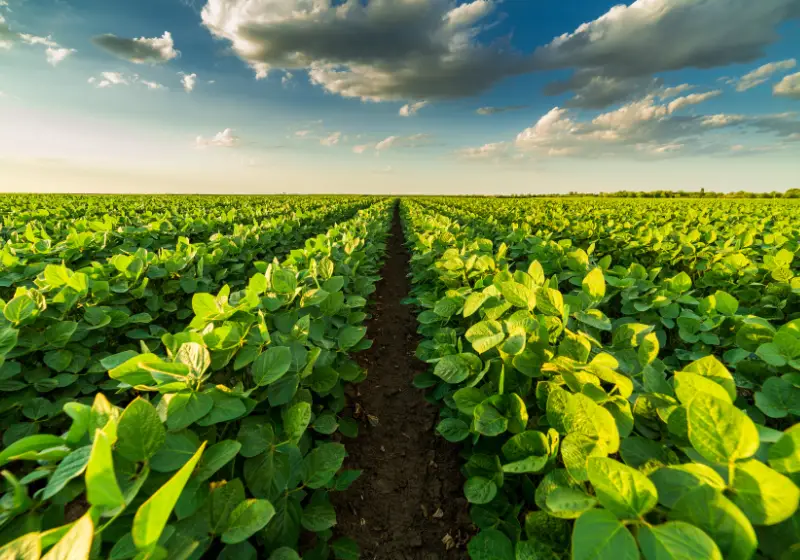
Giant African land snails have been identified as a major Florida agriculture threat. According to the Florida Department of Agriculture and Consumer Services, these invasive pests can cause extensive damage to crops, in tropical and subtropical environments.
Pests and Crops Damage
These snails affect various crops in your agricultural lands, including fruits, vegetables, and ornamental plants. They consume vast amounts of plant material and even devour the stucco on buildings for the calcium necessary for their shells. This widespread feeding can lead to significant economic loss in the agricultural sector.
Health Risks
Beyond the direct impact on your crops, these snails pose a serious health risk to you and your loved ones. They are known to carry the rat lungworm parasite, which can cause meningitis in humans. Ingesting undercooked snail meat or contaminated vegetables may lead to infection, and symptoms can include headache, stiff neck, fever, and vomiting.
Pesticide Usage and Resistance
To protect your crops and prevent the further spread of these snails, you may find yourself relying on increased pesticide usage. However, this comes with its own set of concerns. Overusing pesticides can lead to resistant snail populations and even harm non-target organisms, such as pollinators and other beneficial insects.
To ensure the safety and productivity of your agricultural lands in Florida, staying informed and proactively addressing the threat posed by invasive snails is essential. Monitoring, identifying, and reporting any sightings of these pests will help the Florida Department of Agriculture and Consumer Services in their ongoing efforts to eradicate these destructive creatures and safeguard the future of agriculture in Florida.
Regulations and Eradication Efforts
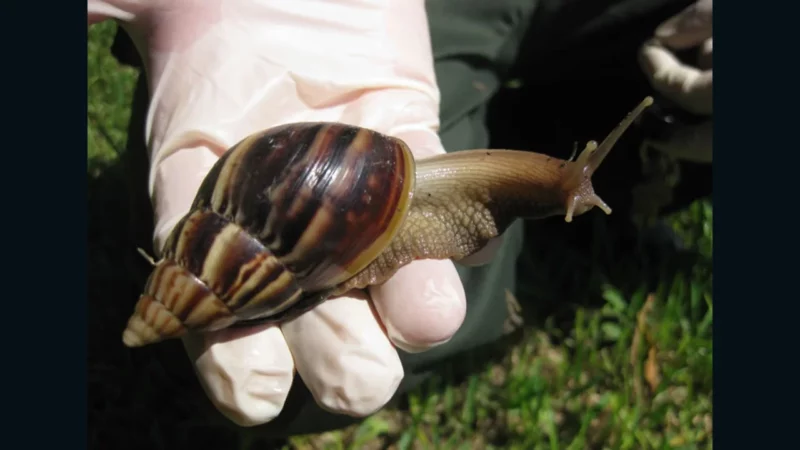
edition.cnn.com/2013/04/15/us/florida-giant-snails
In Florida, the issue of invasive snails, particularly the giant African land snails, has prompted various regulations and eradication efforts. These snails threaten agriculture, ecosystems, and even human health. The Florida Department of Agriculture and Consumer Services (FDACS) has been working on ways to handle this problem.
One of the primary strategies in dealing with these invasive species is the implementation of quarantine measures. By establishing a quarantine area, you can help control the spread of these pests to other regions. This approach protects agriculture and safeguards the native species and ecosystems from the negative impacts of invasive snails.
Another essential aspect of combating the invasive snail issue is eradication efforts. In the past, Florida has successfully eradicated the giant African land snail. The most recent eradication effort occurred in 2021 after coordination between the USDA’s Animal and Plant Health Inspection Service and the state of Florida. Throughout the operation, more than 168,000 snails were removed from the area.
However, you should be aware that eradication is not always long-lasting, as Florida has once again experienced a resurgence of the giant African land snail population. This situation underscores the need for continuous monitoring and a proactive approach to prevent the re-establishment of these invasive species.
Your role in supporting these regulations and eradication efforts is critical. By staying informed and cooperating with the FDACS, the Division of Plant Industry, and other relevant authorities, you can help protect Florida’s agriculture and natural habitats from the harmful impacts of invasive snails.
Environmental Impact

You might not think much of snails, but some mollusks are causing significant environmental harm in Florida. One such invasive species is the giant African land snail. These snails can be detrimental to Florida agriculture, natural areas, and pets, as they cause considerable damage to tropical and subtropical environments considerably.
In addition to destroying crops and plants, the giant African land snails can also damage soil composition. The snails break down organic matter and contribute to soil acidification, negatively impacting native plants that are not adapted to these changes. As a result, these invasive mollusks disrupt the ecosystem balance.
Widespread invasion of these snails also threatens native species in the area. With a high reproduction rate, the snail population can rapidly increase, consuming resources and outcompeting indigenous species for food. This population growth can impact the survival of native animals in the area, including snail-consuming predators that may struggle to adapt to the invasive species.
Regarding pets, snails can transmit parasites and diseases that may negatively affect animals’ well-being. This transmission poses an ecological threat and a public health concern.
However, not all invasive snails are causing harm. The invasive apple snail, for example, has recently been linked to the recovery of the endangered Everglade snail kite. By providing an abundant new food source, the apple snail has helped boost the population of this endangered bird, ultimately having a positive environmental impact in this case.
While some invasive snails may bring about unexpected positive outcomes, it is crucial to recognize and address the overall detrimental consequences invasive snails can have on Florida’s environment, native species, and pets.
Florida Snails as Pets and Illegal Pet Trade
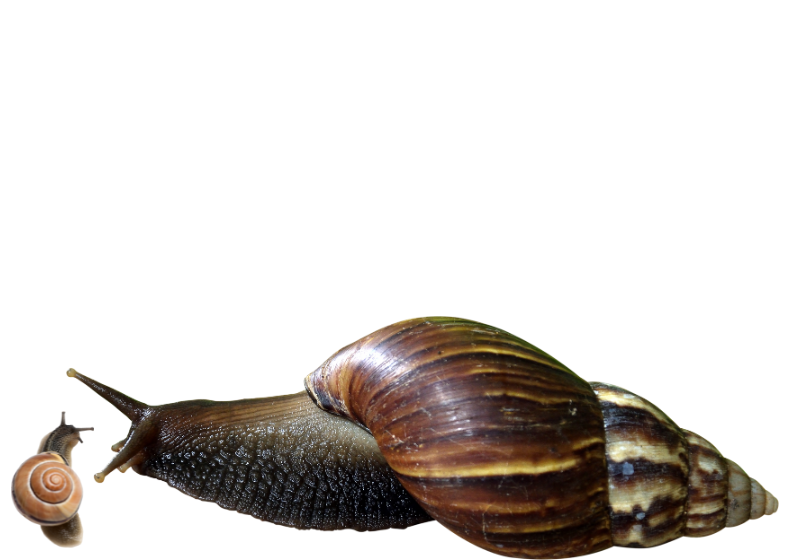
Florida has recently seen a resurgence of giant African land snails, which are illegal to keep as pets in the state. The snails can grow up to 8 inches long and are voracious eaters, causing significant damage to the local ecosystem and agriculture.
In June 2023, the Florida Department of Agriculture and Consumer Services confirmed its presence in the New Port Richey area of Pasco County. These invasive snails have already cost the state $24 million, and officials believe the illegal pet trade is a major factor in their reappearance.
If you are considering keeping a snail as a pet in Florida, be sure you research the legal implications and choose a species that is native or non-invasive. Additionally, ensure you know the proper care for your snail, as mistreatment can lead to suffering and health problems. Remember, owning an illegal pet can result in substantial penalties and the potential confiscation of your pet.
The giant African land snails are known to be carriers of metaldehyde, a pesticide toxic to animals. This risk increases with the snails’ consumption of wild plants that have been treated with metaldehyde. If your dog accidentally ingests one of these snails, they could suffer from severe poisoning, requiring immediate veterinarian attention.
To address the illegal pet trade and the resulting infestation of invasive snails, Florida has implemented quarantines and eradication efforts against the invasive pests. As a responsible pet owner, you must follow the state’s guidelines, make informed decisions about the pets you keep, and report any sightings of invasive species to the proper authorities.
Knowing about your chosen pet’s laws and environmental impacts will help ensure that you are not unintentionally contributing to the problems associated with the illegal pet trade. Stay aware of the risks and make responsible choices to keep both your pet and Florida’s ecosystems safe and healthy.
Treatment and Prevention

Applying various treatment and prevention methods is crucial to control snails in Florida effectively. One common method is using pesticides specifically designed for snails, known as molluscicides. When selecting a pesticide, be sure to choose one that is safe for your garden environment and follow the label instructions carefully to avoid harming non-target organisms.
Baiting is another effective approach to controlling snail populations. Snail baits generally contain an attractant combined with a molluscicide, ensuring that these pests find and consume the bait. Place baits in areas with high snail activity, and remember to replace them frequently, as they may lose their effectiveness over time or after rainfall.
In addition to chemical control methods, implementing preventive measures can significantly reduce snail populations. Here are some useful prevention strategies:
- Quarantine new plants before introducing them to your garden to ensure they are snail-free.
- Remove hiding places such as boards, stones, debris, and dense ground covers, making your garden less attractive for snails.
- Lessen humidity by reducing irrigation or switching to drip irrigation instead of sprinklers(source).
Furthermore, creating barriers can help protect your plants from snail infestations. One option is using copper foil or screening around your plants, as snails and slugs are deterred from crawling over these surfaces.
When considering the cost of treatment and prevention methods, weighing the expenses against the potential damage that snails can cause to your garden is essential. Investing in preventive measures and early treatment can help you avoid more significant losses in the future.
In conclusion, you can effectively control snail populations in your Florida garden by combining treatment options, such as molluscicides and baits, and preventive measures, like quarantining plants and creating barriers.
Snails and Health Risks

Giant African land snails in Florida can pose serious health risks to humans. These snails are carriers of rat lungworm, a parasite that can cause a rare type of meningitis. When handling these snails, you must wear gloves and follow proper hygiene practices to minimize your risk of infection.
One of the primary concerns with these invasive snails is their ability to transmit parasites such as the rat lungworm. If you accidentally consume the snail, its slime, or produce contaminated by them, there’s a chance you could contract rat lungworm. This parasite can lead to meningitis, which affects your central nervous system and has severe health consequences.
Always wear gloves when handling snails or entering their environment to protect yourself and your loved ones better. Washing your hands thoroughly with soap and water after handling snails or contaminated produce can also help prevent the spread of rat lungworm and other diseases.
In conclusion, knowing the potential health risks associated with giant African land snails in Florida is crucial. By using gloves, practicing proper hygiene, and understanding the dangers of rat lungworm and meningitis, you can protect yourself and stay informed about this invasive species.
Frequently Asked Questions
What is the impact of invasive snails in Florida?
Invasive snails like the Giant African land snails have significant consequences in Florida. These snails can damage the ecosystem by consuming native plants and disrupting the food chain. They also feed on more than 500 plant types, affecting agriculture and ornamental plantings. You can learn more about the impacts of invasive snails from this Florida Museum article.
Are Giant African land snails dangerous to humans?
Giant African land snails can pose risks to human health as they can carry a parasite called rat lungworm, which causes meningitis in humans. Besides, their waste can contaminate water sources and soil, increasing the risk of disease transmission. You can read more about this on NPR.
How to manage snails on my house in Florida?
Managing snails in your Florida home involves reducing hiding spots, using barriers, and removing them by hand. You can use copper tape or diatomaceous earth as barriers around plants or even create beer traps to attract and drown them. Regular monitoring and manual removal can also help manage snail populations. Read more about snail control in this Gardening Solutions article.
What measures are taken to control snail outbreaks?
Florida employs various measures to control snail outbreaks. The authorities track and monitor invasive snail populations, set up traps, and launch public awareness campaigns. Additionally, strict regulations on imports and movement of plants and pets help prevent the entry of invasive species. Refer to the Florida Department of Agriculture for more information.
Are there any venomous snails present in Florida?
Most snails in Florida are not venomous; however, cone snails in Florida waters possess venomous stings. Although these marine snails usually pose no threat to humans, their sting can cause severe pain or, in rare cases, paralyze and even kill. It’s important to exercise caution when handling cone snails.
How can I identify different types of snails in Florida?
To identify Florida snails, you can use a snail identification guide, such as the one provided by the Florida Museum. Start by observing the snail’s physical characteristics, such as shell shape, color, and size. With practice and reference to the identification guide, you can differentiate between various types of snails in Florida.

![What Do Apple Snails Eat? [Full Guide]](https://allourcreatures.com/wp-content/uploads/2021/10/what-do-apple-snails-eat-768x512.jpg)


